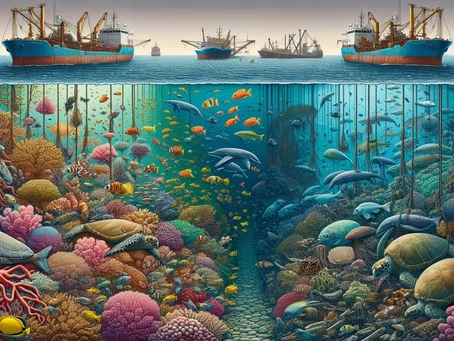Marine Conservation vs. Exploitation: Striking a Sustainable Balance
The ocean sustains life on Earth, offering food, climate regulation, and cultural value. Yet human activity—overfishing, pollution, and unchecked development—threatens its delicate balance. Marine conservation seeks to safeguard biodiversity while acknowledging human reliance on ocean resources. Achieving harmony requires innovation, collaboration, and a deep sense of responsibility toward our blue planet.
The Role of Marine Conservation Organizations
Conservation groups act as vital connectors between science, policy, and public engagement. Their work includes:
- Conducting research to guide evidence-based decisions
- Advocating for marine protected areas (MPAs)
- Educating communities and policymakers through outreach programs
- Building global partnerships to address shared challenges
By driving awareness and action, these organizations help create long-term strategies that benefit both people and marine ecosystems.
Tackling Invasive Species
Invasive alien species disrupt ecosystems by outcompeting native organisms, spreading disease, and altering habitats. Solutions include stricter controls on shipping and aquaculture, targeted removal programs, and restoration initiatives. While the fight is complex, proactive measures can protect biodiversity and restore balance.
Climate Change and Ocean Health
Rising Temperatures and Acidification
Climate change intensifies threats to marine life:
- Coral bleaching undermines reef ecosystems
- Species migration disrupts food chains
- Loss of habitats weakens biodiversity
Reducing greenhouse gas emissions and scaling renewable energy are essential steps toward ocean resilience.
Sustainable Fisheries
Responsible fishing supports food security while protecting ecosystems. Effective practices include:
- Using selective gear to reduce bycatch
- Respecting science-based catch limits
- Supporting sustainable aquaculture as an alternative
Consumer choices also matter—opting for certified seafood encourages industry-wide sustainability.
Habitat Conservation and Human Activity
Safeguarding Marine Habitats
Healthy habitats such as reefs, mangroves, and seagrass beds support biodiversity and coastal protection. Strategies include expanding MPAs, regulating fishing, and reducing marine pollution.
Consequences of Bottom Trawling and Bycatch
- Bottom trawling destroys fragile seafloor habitats
- Bycatch harms dolphins, turtles, and seabirds
- Overfishing destabilizes ecosystems
Addressing these destructive practices is vital to maintaining ocean health and food supply.
The Importance of Marine Biodiversity
Marine biodiversity underpins ecosystem resilience. Coral reefs, kelp forests, mangroves, and deep-sea vents provide shelter and food for countless species. Protecting diverse habitats ensures that migratory and resident species alike can thrive, sustaining the entire web of ocean life.
Innovative Solutions for Recovery
Marine Protected Areas
MPAs serve as sanctuaries where ecosystems regenerate, boosting fish stocks and supporting local economies through eco-tourism. Their success relies on planning, enforcement, and community involvement.
Coral Restoration Initiatives
Techniques like coral gardening, assisted evolution, and genetic research are helping reefs adapt to warming seas. Community participation strengthens these efforts and ensures their long-term impact.
Community Engagement and Education
From beach clean-ups to citizen science, grassroots movements empower people to take ownership of local conservation efforts. Education fosters awareness, while advocacy and social media amplify collective action. Local solutions create global ripple effects in ocean protection.
Policy, Governance, and the Blue Economy
Policy research and regulation provide frameworks for sustainable ocean use. Zoning coastal waters, enforcing fishing laws, and supporting eco-friendly industries balance conservation with economic development. Sustainable ecotourism and responsible seafood production illustrate how economic growth and environmental stewardship can coexist.
Preparing for the Future
Emerging technologies—satellite tracking, underwater vehicles, and genetic analysis—offer new tools to monitor and protect marine ecosystems. Coupled with climate resilience strategies, they prepare humanity to navigate the uncertainties of a changing ocean.
Conclusion
The future of the ocean depends on our ability to balance conservation with responsible exploitation. By protecting habitats, supporting sustainable fisheries, and fostering innovation, we can secure healthy oceans for generations. Every decision—from policy to consumer choice—contributes to safeguarding the planet’s blue heart.

